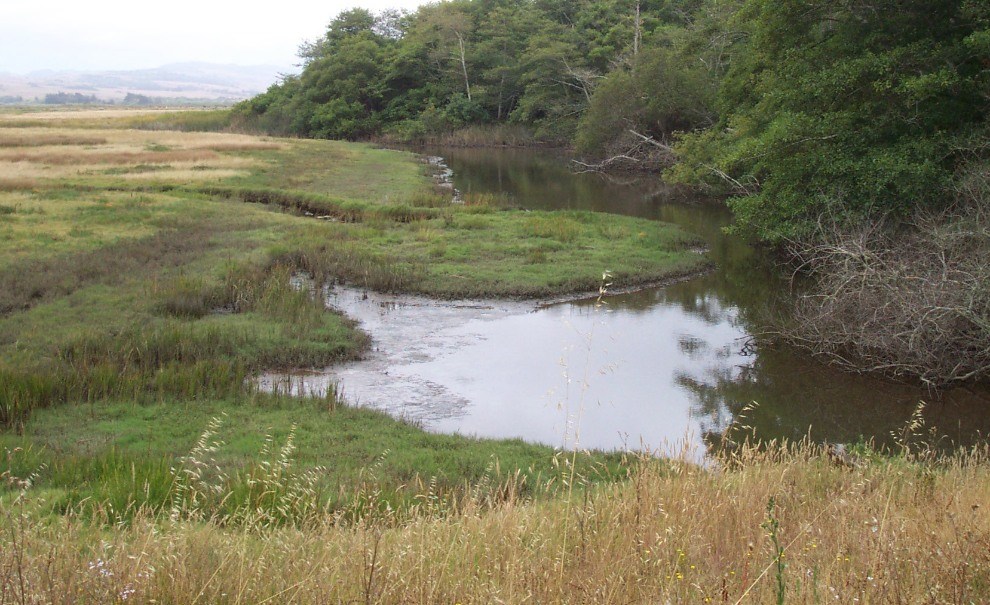Part of a series of articles titled Coastal Geomorphology—Ecological Effects of Storms.
Next: Plant Communities
Article

NPS photo by Rebecca Beavers.
Salt marshes are one of the most biologically productive habitats on the planet. They form between land and the salty or brackish water of bays and estuaries. Storms can deposit needed sediment into salt marshes, increasing the elevation and allowing them to keep pace with rising sea level. Although sediment transported and deposited by storm surge can initially bury salt marsh vegetation, sea grasses and other salt-tolerant vegetation grow through the newly deposited layer of sediment and ultimately trap more sediment, further increasing the elevation of the marsh. This growth in elevation helps to prevent the marsh from becoming an area of open water, which would substantially decrease the biodiversity associated with the intertidal zone.

NPS photo.
Part of a series of articles titled Coastal Geomorphology—Ecological Effects of Storms.
Next: Plant Communities
Last updated: July 18, 2019